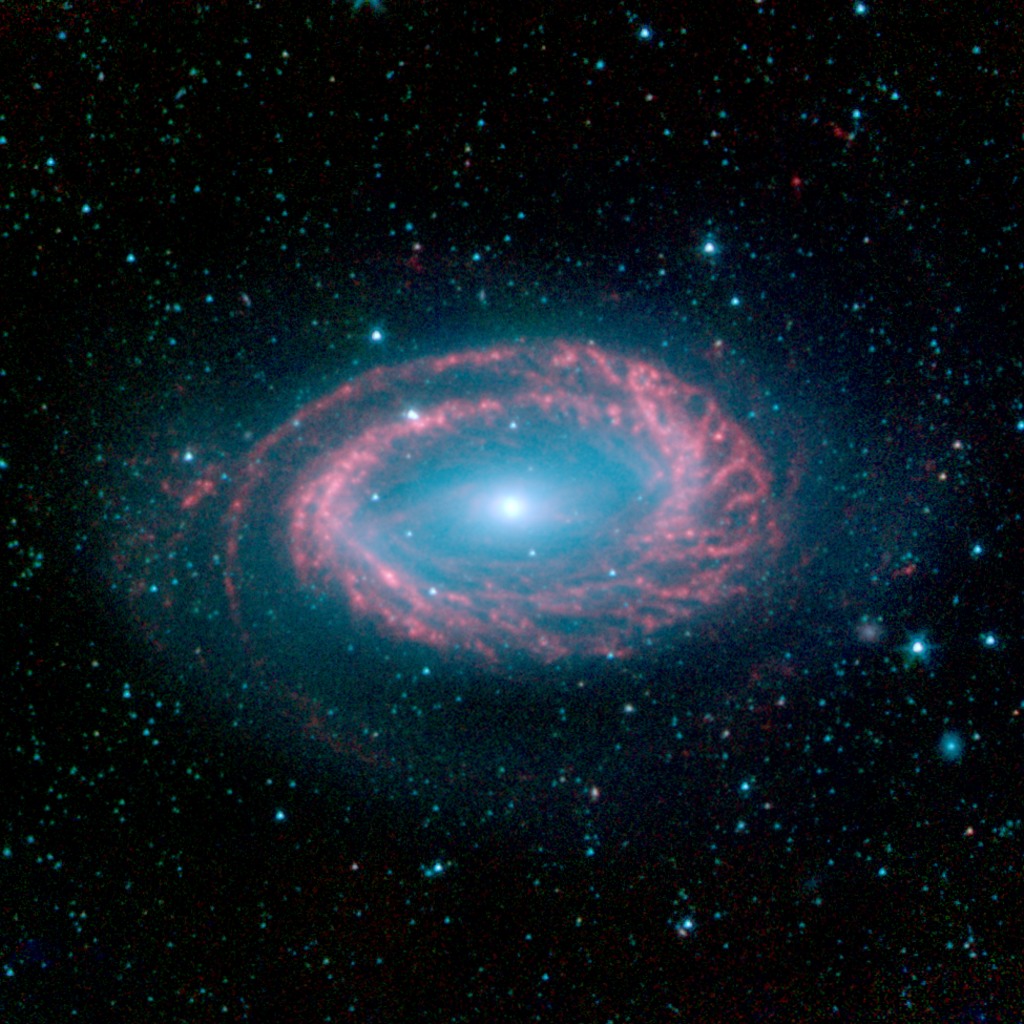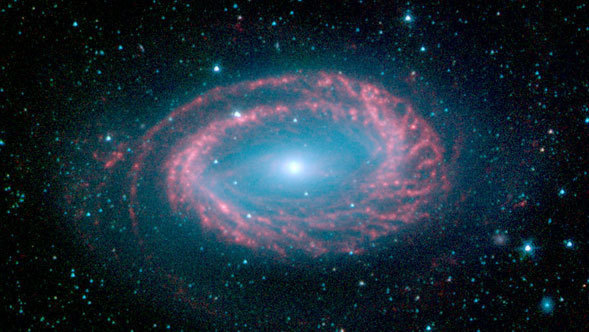
Credit: NASA/JPL-Caltech/R. Kennicutt (University of Arizona) and the SINGS Team
Observation • August 25th, 2005 • sig05-011
sig05-011
On August 25, 2003, NASA's Spitzer Space Telescope blasted into the same dark skies it now better understands. In just two years, the observatory's infrared eyes have uncovered a hidden universe teeming with warm stellar embryos, chaotic planet-forming disks, and majestic galaxies, including the delightfully odd galaxy called NGC 4725 shown here.
This peculiar galaxy is thought to have only one spiral arm. Most spiral galaxies have two or more arms. Astronomers refer to NGC 4725 as a ringed barred spiral galaxy because a prominent ring of stars encircles a bar of stars at its center (the bar is seen here as a horizontal ridge with faint red features). Our own Milky Way galaxy sports multiple arms and a proportionally smaller bar and ring.
In this infrared Spitzer picture, the galaxy's arm is highlighted in red, while its center and outlying halo are blue. Red represents warm dust clouds illuminated by newborn stars, while blue indicates older, cooler stellar populations. The red spokes seen projecting outward from the arm are clumps of stellar matter that may have been pushed together by instable magnetic fields.
NGC 4725 is located 41 million light-years away in the constellation Coma Berenices.
This picture is composed of four images taken by Spitzer's infrared array camera at 3.6 (blue), 4.5 (green), 5.8 (red), and 8.0 (red) microns. The contribution from starlight (measured at 3.6 microns) has been subtracted from the 5.8- and 8-micron images to enhance the visibility of the dust features.
About the Object
- Name
- NGC 4725
- Type
- Galaxy > Type > Spiral
- Galaxy > Type > Barred
- Galaxy > Type > Ring
- Distance
- 41,000,000 Light Years
- Redshift
- 0.004023
Color Mapping
| Band | Wavelength | Telescope |
| Infrared | 3.6 µm | Spitzer IRAC |
| Infrared | 4.5 µm | Spitzer IRAC |
| Infrared | 5.8 µm | Spitzer IRAC |
| Infrared | 8.0 µm | Spitzer IRAC |
Astrometrics
- Position (J2000)
- RA =12h 50m 18.5s
- Dec = 25° 25' 27.1"
- Field of View
- 12.2 x 12.2 arcminutes
- Orientation
- North is 55.2° left of vertical





